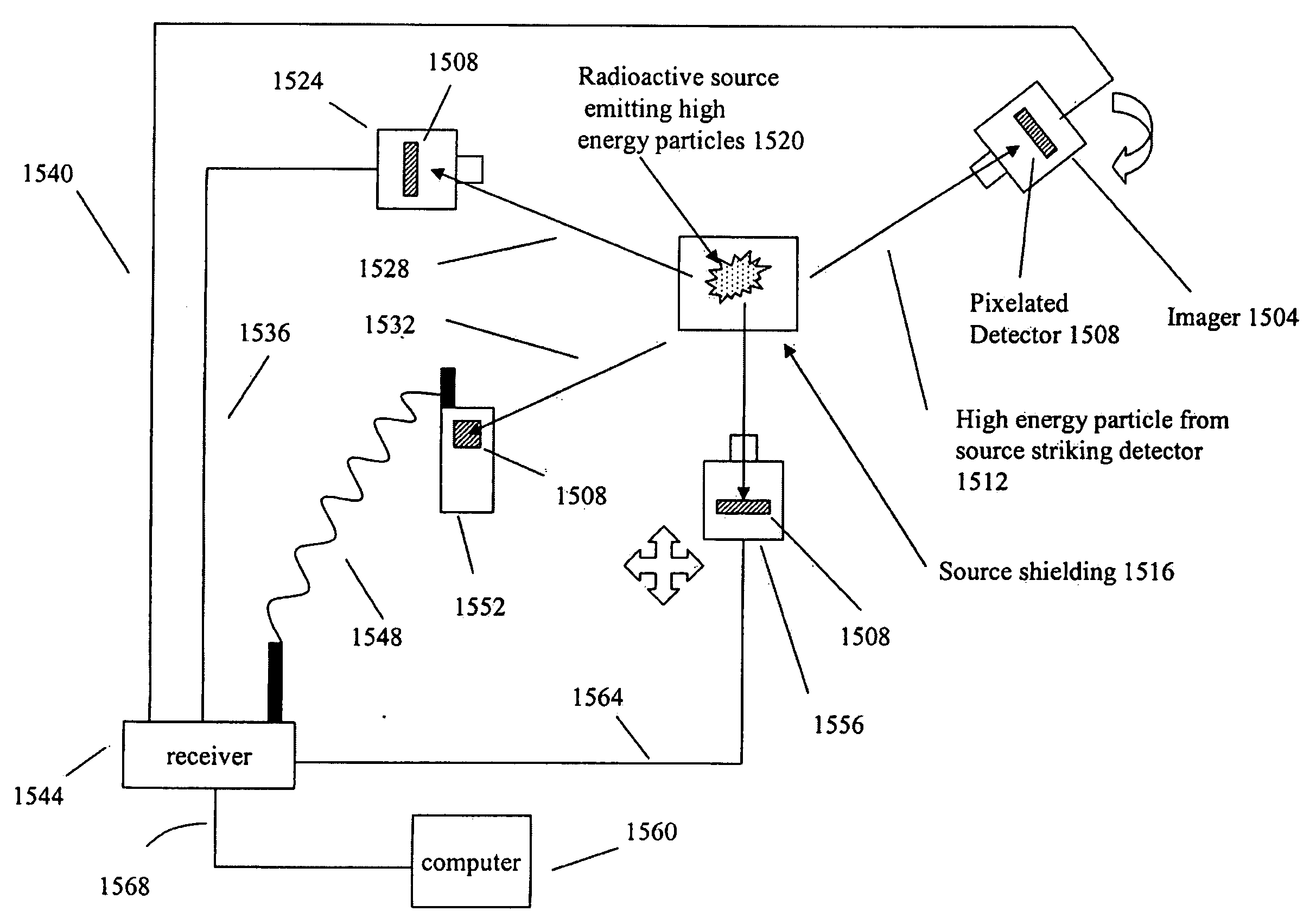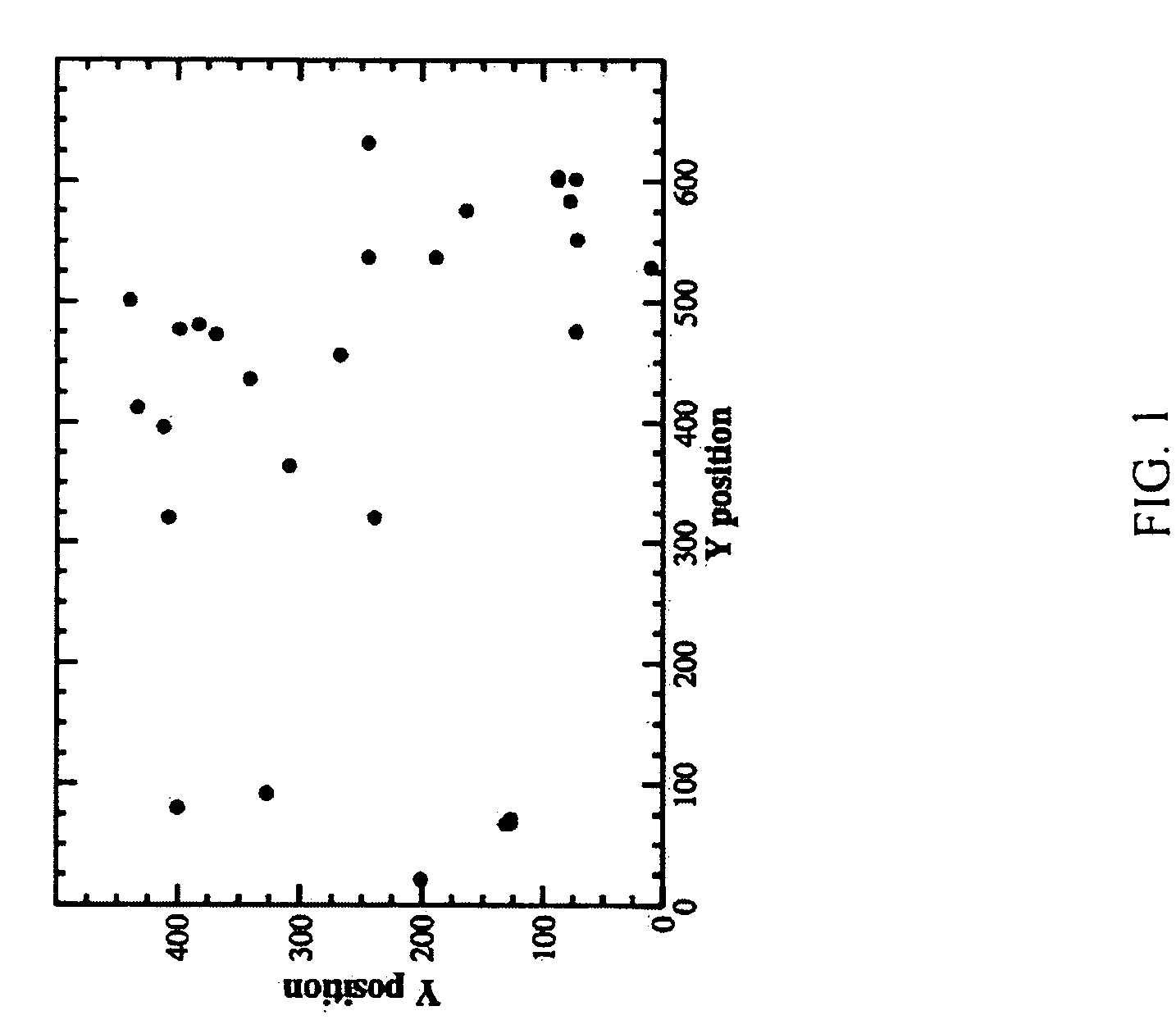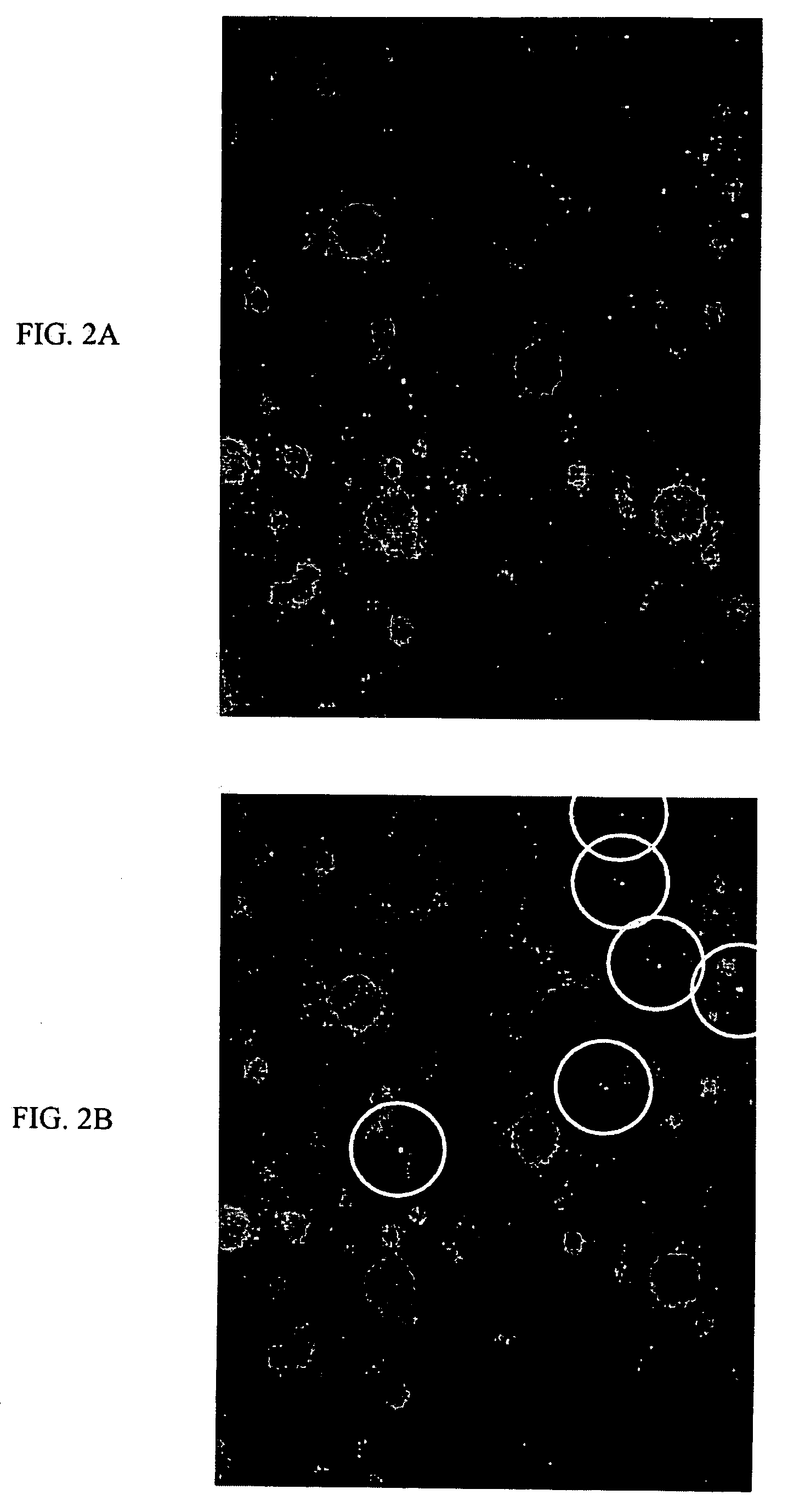Apparatus and Method for Detection of Radiation
a radiation detection and apparatus technology, applied in the field of apparatus and methods for radiation detection, can solve the problems of cs-137, sr-90, co-60, and cs-137 being more dangerous than others for this application, and requiring expensive installation of such a network of radiation sensors
- Summary
- Abstract
- Description
- Claims
- Application Information
AI Technical Summary
Benefits of technology
Problems solved by technology
Method used
Image
Examples
example 1
[0093]This example illustrates the ability of an imager to detect high energy particles and illustrates the sensitivity of the detector.
[0094]The functionality and sensitivity of the various imagers to detect gamma rays (still and video) from different manufacturers were performed. In each experiment, the cameras were operated, without modifications, according to their standard directions. Exposures were alternately made with and without radioactive material near the camera body. The images taken without a nearby source served as control experiments. In general, it was expected that very few of the control experiment images should display the small pixel-scale dots caused by radiation strikes on the detector. It is also reasonable to expect some, but not necessarily all, of the images (also called frames, exposures or collectively data) to contain such artifacts.
[0095]In one series of laboratory tests, a digital video camera manufactured by Logitech, specifically, the Quickcam for N...
example 2
[0107]This prophetic example illustrates the use of a CCD or CMOS camera or video camera to detect gamma-rays from a radioactive material.
[0108]One or more CCD or CMOS imagers may be used to sample a region or objects in the environment to determine if radioactive materials are present. An image from each of the cameras may have the charge at each pixel determined using the imager's hardware to detect pixels with high charge caused by photoelectrons generate by gamma rays. Alternatively, the image may be analyzed using software or firmware from the camera or a central processor connected to the camera to detect gamma-ray artifacts. The data signature of a gamma ray may include one or more pixels having high charge or brightness above a background or threshold level. The charge, brightness and frequency of the pixels struck by the gamma rays emitted from a source or radioactive material is expected to be greater than the charge or brightness for the same pixels interacting with ambie...
example 3
[0112]One non-limiting way of checking the pixels or image from an imager is to evaluate the four closest pixels (4CP) in digital image data. If the pixel or image data point under consideration is (X,Y), then the 4CP are: (X+1,Y), (X,Y+1), (X−1,Y), and (X,Y−1). The local background value of the imager can be taken as the average of the eight pixels corresponding to (X-2,Y−2), (X,Y−2), (X+2,Y−2), (X−2,Y), (X+2,Y), (X−2,Y+2), (X,Y+2), (X+2,Y+2); alternatively if a known reference object is in the field, it may be set to be the background and the average of the pixels or data points corresponding to the object set to the background.
[0113]In one mode of operation as illustrated in FIG. 7, a digital camera / digital video camera takes a picture (704) and in another step the digital image(s) may be transmitted to computer (708). The images may be searched for specific signatures of gamma-ray strikes and may also include false positive tests (712). If evidence of a radioactive material is f...
PUM
 Login to View More
Login to View More Abstract
Description
Claims
Application Information
 Login to View More
Login to View More - R&D
- Intellectual Property
- Life Sciences
- Materials
- Tech Scout
- Unparalleled Data Quality
- Higher Quality Content
- 60% Fewer Hallucinations
Browse by: Latest US Patents, China's latest patents, Technical Efficacy Thesaurus, Application Domain, Technology Topic, Popular Technical Reports.
© 2025 PatSnap. All rights reserved.Legal|Privacy policy|Modern Slavery Act Transparency Statement|Sitemap|About US| Contact US: help@patsnap.com



